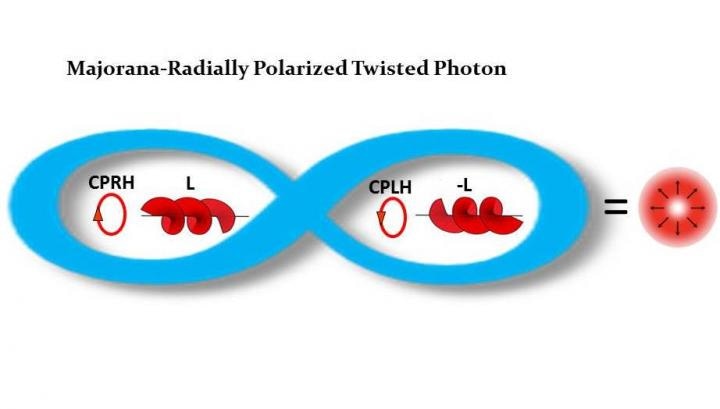Jul 18 2019
Robert R. Alfano, City College of New York (CCNY) Distinguished Professor of Science and Engineering¸ is regarded as a pioneer by Photonics Media for his earlier findings on supercontinuum and Cr tunable lasers.
 Majorana-radially polarized twisted photon. (Image credit: Robert R. Alfano and Yury Budansky)
Majorana-radially polarized twisted photon. (Image credit: Robert R. Alfano and Yury Budansky)
Now, he and his research group are claiming another prominent discovery with a novel, super class of photons called “Majorana photons.” These photons may result in improved information on quantum-level transition as well as imaging of the brain and its functions.
The team’s study is based on the fact that photons, while possessing significant characteristics of coherence, wavelength, polarization, and spatial modes, take on many different forms. “Photons are amazing and are all not the same,” stated Alfano.
The researchers’ focus “was to use a ‘special super form’ of photons, which process the entanglement twists of both polarizations and the wavefront to probe and would propagate deeper in brain tissues, microtubules, and neuron cells, giving more fundamental information of the brain than the conventional photon forms.”
These photons are unique and capable of traveling with different wavefronts. In addition, they have a vortex in which wavefront twists and also the polarization is non-uniform in the wave beam diameter. Such beams are referred to as Cylindrical Vector Vortex Beams, or CVVB for short.
Among the CVVB photons, a new “super special” class known as classical entangled photon beams was identified by the Alfano team.
These photons are said to be mixed, that is, they possess varied types of circular polarization as well as - L and + L orbital angular momentum, locally. They are also entangled with their own anti photon. Two stand out Azimuthal and Radial optical beams.
Alfano called these photons “Majorana Photons,” after an Italian theoretical physicist Ettore Majorana, a protégé of Enrico Fermi, who researched on neutrino masses.
The ‘super special photon” will play an important role in understanding the fundamental and quantum processes in materials, deeper penetration and to advance applications in photo detection sensing, information, communication, and future computers.
Robert R. Alfano, Distinguished Professor of Science and Engineering¸ City College of New York
Alfano is a creative inventor whose study has led to developments in nonlinear optical imaging and ultrafast laser science, since 1970.
The study was partly funded by a five-year $1.5 million grant from the United States Army Research Office (ARO) to assess quantum effects in neuron cells, brain, and microtubules.
Travis Craddock (Nova Southeastern University), Enrique Galvez (Colgate University), Lingyan Shi (University of California San Diego), Sandra Mamani, an electrical engineering PhD student at CCNY, and Daniel Nolan (Corning) were Alfano’s collaborators in the ARO grant.